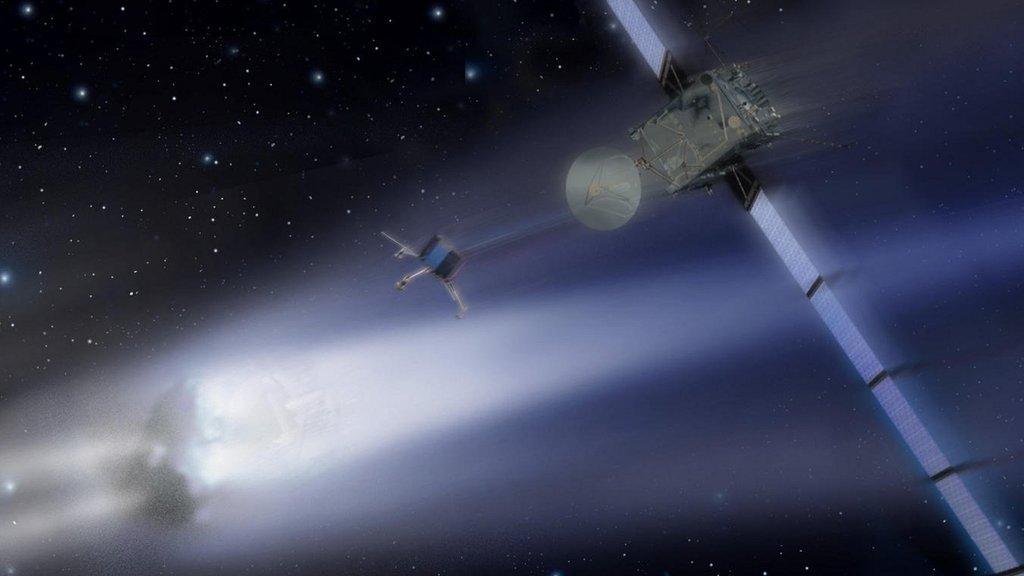Rosetta: Comet probe gets down to work
- Published

Looking into the "gorge" that separates the head and neck of Comet 67P
A week after arriving at Comet 67P/Churyumov-Gerasimenko, Europe's Rosetta probe is busy acquiring the data needed to select a landing site.
Scientists on the mission expect to meet in just over a week to begin the process of producing a "long list" of no more than five locations.
These will then be whittled down to two - a primary and a back-up - to be announced in mid-September.
The plan is to try touch down with the piggybacked Philae robot in November.
On Thursday, a new view of the comet from Rosetta's Osiris Narrow Angle Camera was issued.
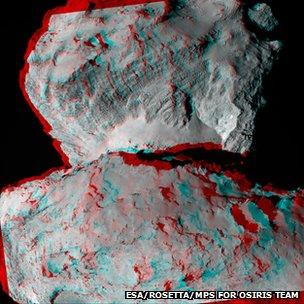
Wearing stereoscopic glasses, you can make Comet 67P jump out of the screen
It looks across the body of the rubber-duck-shaped object towards its head, revealing new detail of the neck area.
The deep "gorge" has been measured to be colder than the rest of the comet, suggesting ices may lurk closer to the surface than in other regions so far observed by Rosetta's instruments.
The Max Planck Institute for Solar System Research, external, which leads the Osiris camera, external, has put out two very slightly off-set versions of the scene, allowing the viewer to get a 3D impression of the comet when wearing stereoscopic glasses with red-green/blue filters.
The two images used to make this anaglyph were captured 17 minutes apart on 7 August, a day after Rosetta went into "orbit" around the enigmatic object. The distance is 104km.
"For landing site selection, we must now provide images of course, but also a shape model of the comet, including 3D models of the surface topography," explained Osiris principal investigator Holger Sierks.
"In addition, we'll provide albedo (reflectance) maps, and we can say something about activity levels and surface composition; as well as making obstacle counts - histograms on how many obstacles we see in particular areas," he told BBC News.
Meanwhile, the 10 other instruments on the European Space Agency satellite, external are gathering their own data-sets.
The Grain Impact Analyser and Dust Accumulator (Giada), external, has reported detecting its first dust grains, external - just four, but it will not be long before it is being peppered by material coming off the comet.
67P is relatively quiet at the moment, moving some 530 million km from the Sun. As it gets closer to our star in the coming months, its ices will warm and copious amounts of gas and dusty particles will be ejected.
Esa is now posting an image a day from the navigation cameras on Rosetta.
They do not show as much detail as the Osiris system, but still give a fascinating impression of the roughly 4km-wide comet as it turns on its axis - a rotation that takes 12.4 hours.
Below are the images posted on the Esa Rosetta blog, external over the past week.
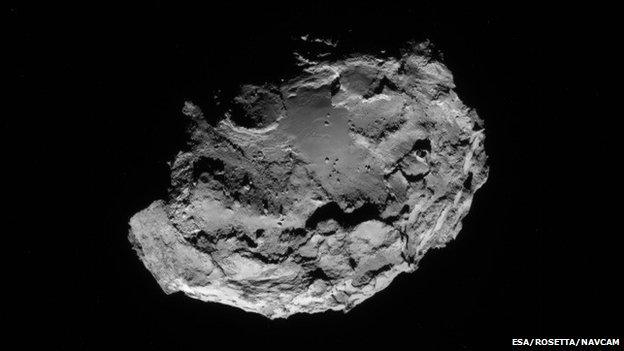
13 August at a distance of about 115km
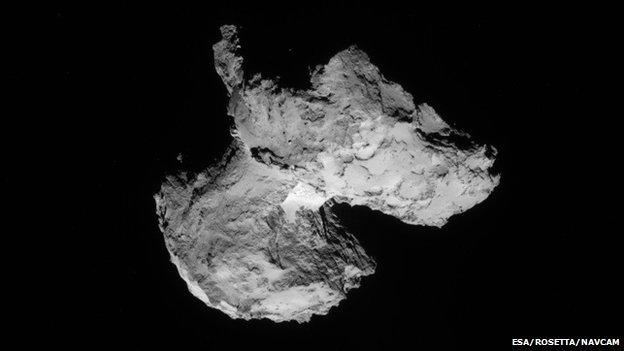
12 August at a distance of about 103km
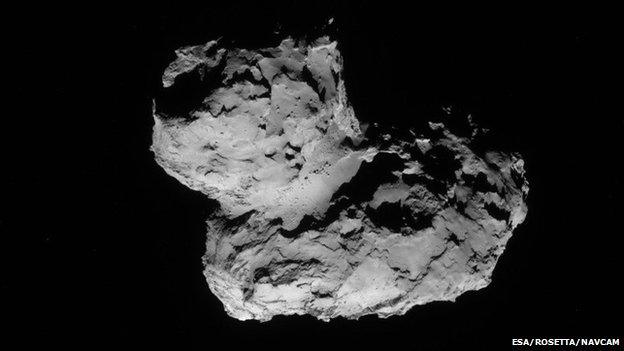
11 August from a distance of about 102km
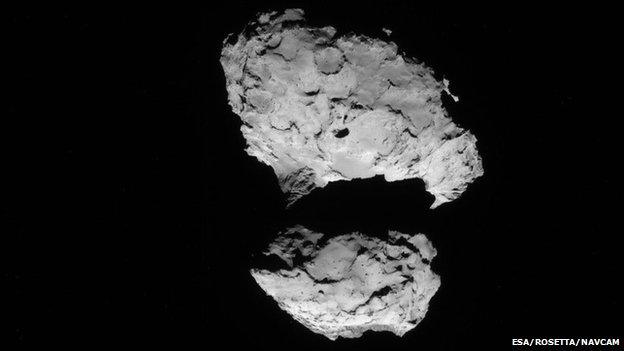
10 August from a distance of about 110km
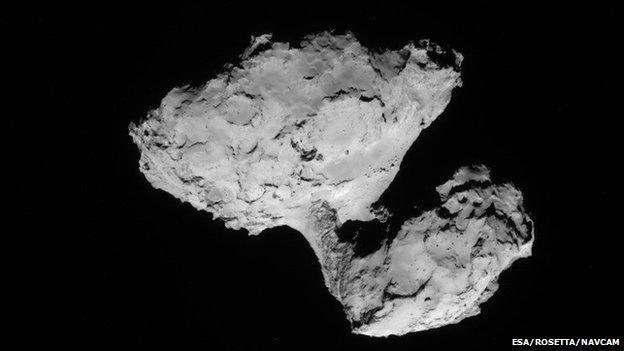
9 August from a distance of about 99km
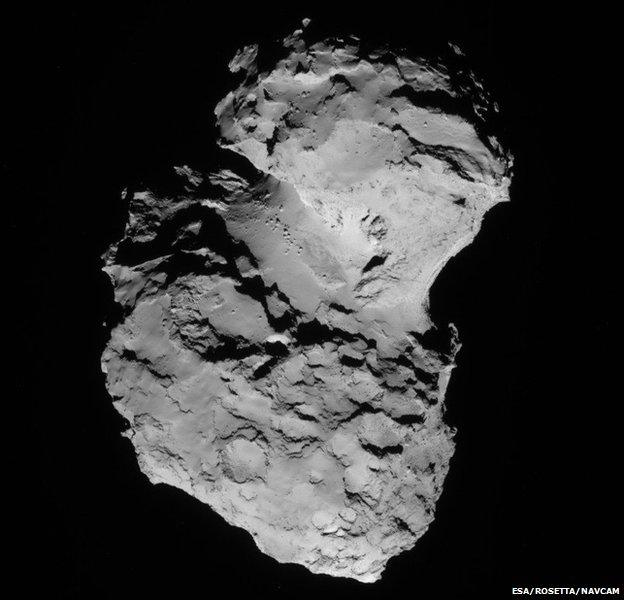
8 August from a distance of about 81km
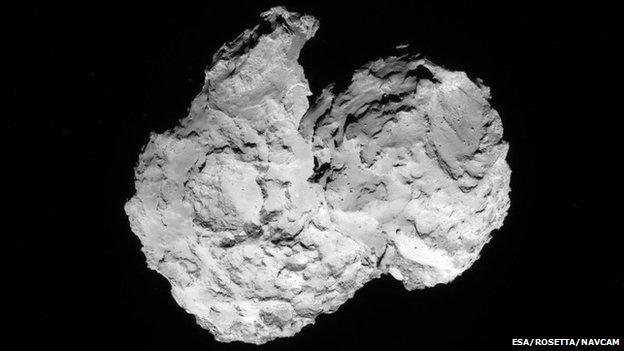
7 August from a distance of about 83km

Jonathan.Amos-INTERNET@bbc.co.uk and follow me on Twitter: @BBCAmos, external
- Published7 August 2014
- Published6 August 2014
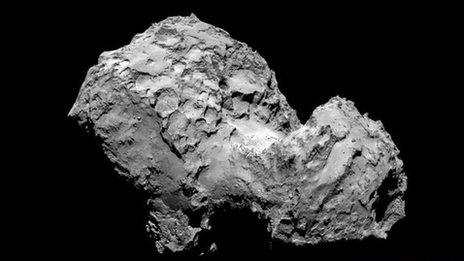
- Published6 August 2014
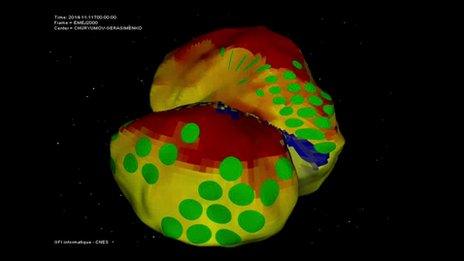
- Published6 August 2014
- Published6 August 2014
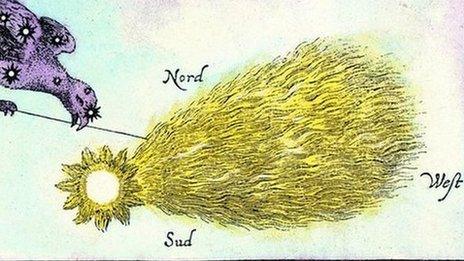
- Published5 August 2014
- Published17 July 2014
- Published20 January 2014
